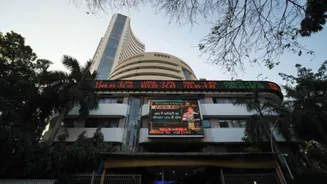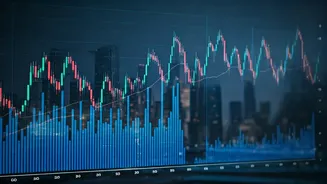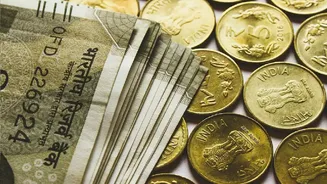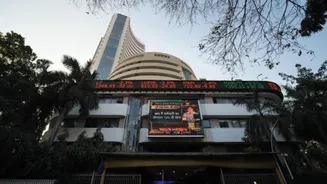Market Overview
The Indian stock market recently exhibited mixed performance, with fluctuations in major indices. The Sensex and Nifty experienced volatility, influenced
by various factors, including sector-specific movements and company-specific news. Several sectors displayed contrasting trends, with some, like metals, showing gains, while others, like pharma and auto, faced downward pressure. Key events included block trades, earnings reports, and shifts in analyst ratings. The overall sentiment reflected a cautious approach among investors, with trading volumes and sectoral performances indicating the complexity of the present market environment.
Sectoral Performance
Different sectors within the Indian market showed varying trends. The metal sector demonstrated positive movement, while the pharma and auto sectors faced declines. Specific stocks within these sectors reacted to news and financial results. For example, Ambuja Cements saw significant trading activity, and GAIL India and Devyani International experienced block trades. Furthermore, the Nifty Private Bank index declined, with major banks like Kotak Mahindra Bank and Axis Bank contributing to the loss. Conversely, the BSE Metal index showed an increase, signaling differing impacts across sectors.
Company-Specific News
Several companies witnessed noteworthy developments affecting their stock prices. Laurus Labs saw profit booking despite positive Q2 results, while Goldman Sachs and Jefferies maintained varied ratings. Colgate Palmolive received attention with ratings from Nomura, Nuvama, CLSA, and Jefferies. HUL was also subject to rating changes from Goldman Sachs and CLSA. Other companies, such as Cigniti Technologies, Arihant Foundations & Housing, ARSS Infrastructure Projects, and Utkarsh SFB, had events influencing their market performance, from profit increases to share allotments. These specific developments played an important role in shaping the market's dynamics.
Expert Insights
Market analysts and research firms provided insights into current market conditions. Experts such as Vinod Nair from Geojit Investments, Nagaraj Shetti from HDFC Securities, and Siddhartha Khemka from Motilal Oswal Financial Services, offered their views on market trends. Moreover, rating adjustments and target price revisions by firms like Jefferies and Goldman Sachs provided vital clues for investors. These perspectives helped investors understand market developments and make informed decisions, reflecting the overall sentiment and the driving forces within the market.
Key Market Indicators
Various market indicators revealed the overall market health. The Shanghai stock market achieved a 10-year high, while the Indian rupee remained relatively stable, with slight movements. The market’s performance was gauged by indices such as the Sensex and Nifty, which faced significant volatility. The trading volume was also significant, with block trades and active participation in certain stocks. Other indices like the BSE Power and Healthcare indexes showed fluctuations, reflecting specific sector-based movements. These indicators helped assess the market's stability and potential for future developments.
IPO Activity
The IPO market demonstrated activity with upcoming launches and developments related to existing offerings. Orkla India’s IPO had its GMP (Grey Market Premium) rise as the company finalized its price band. The market also anticipates a wave of IPOs valued at approximately Rs 40,000 crore until the end of November. These factors highlighted the continued interest and activity in the primary market, which suggests investor interest in new offerings and the overall health of the IPO segment. The activities surrounding IPOs show the investors' perspective on market dynamics and opportunities.












